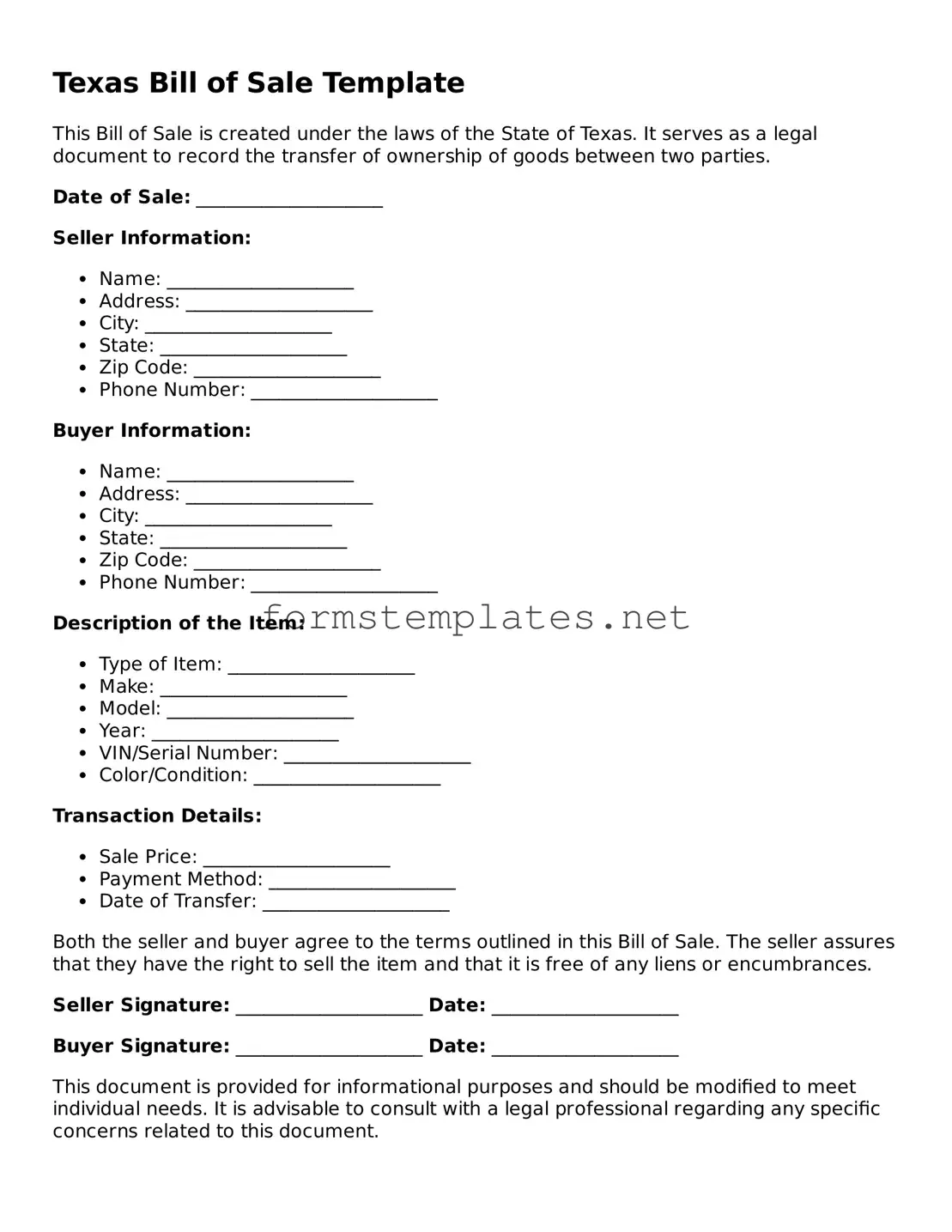Texas Bill of Sale Template
This Bill of Sale is created under the laws of the State of Texas. It serves as a legal document to record the transfer of ownership of goods between two parties.
Date of Sale: ____________________
Seller Information:
- Name: ____________________
- Address: ____________________
- City: ____________________
- State: ____________________
- Zip Code: ____________________
- Phone Number: ____________________
Buyer Information:
- Name: ____________________
- Address: ____________________
- City: ____________________
- State: ____________________
- Zip Code: ____________________
- Phone Number: ____________________
Description of the Item:
- Type of Item: ____________________
- Make: ____________________
- Model: ____________________
- Year: ____________________
- VIN/Serial Number: ____________________
- Color/Condition: ____________________
Transaction Details:
- Sale Price: ____________________
- Payment Method: ____________________
- Date of Transfer: ____________________
Both the seller and buyer agree to the terms outlined in this Bill of Sale. The seller assures that they have the right to sell the item and that it is free of any liens or encumbrances.
Seller Signature: ____________________ Date: ____________________
Buyer Signature: ____________________ Date: ____________________
This document is provided for informational purposes and should be modified to meet individual needs. It is advisable to consult with a legal professional regarding any specific concerns related to this document.
